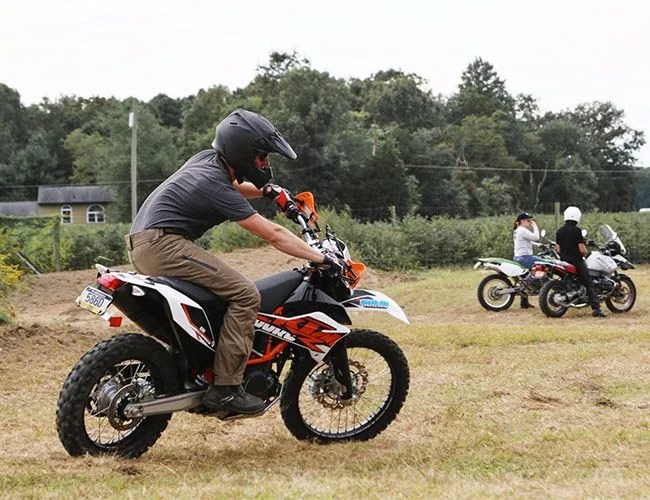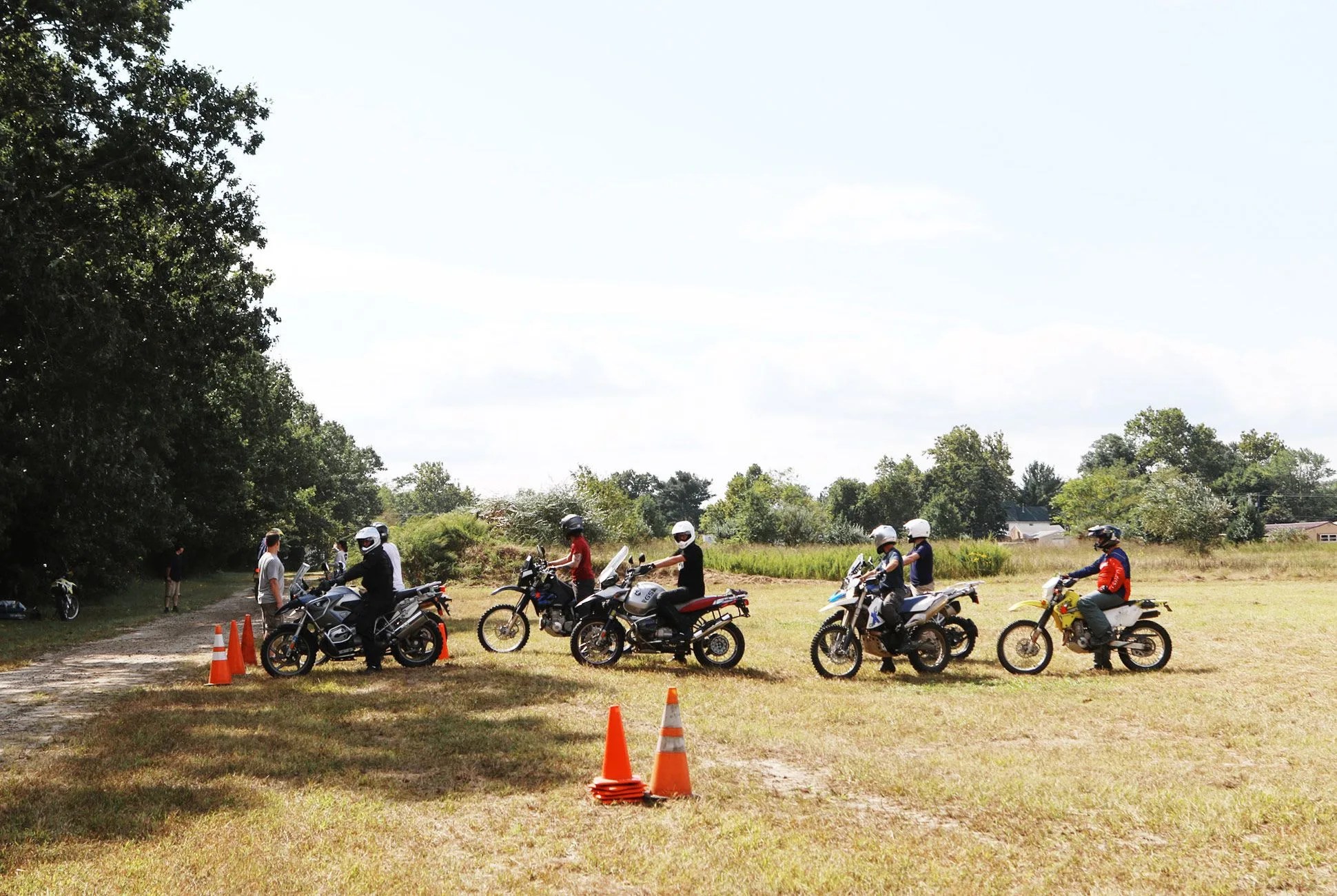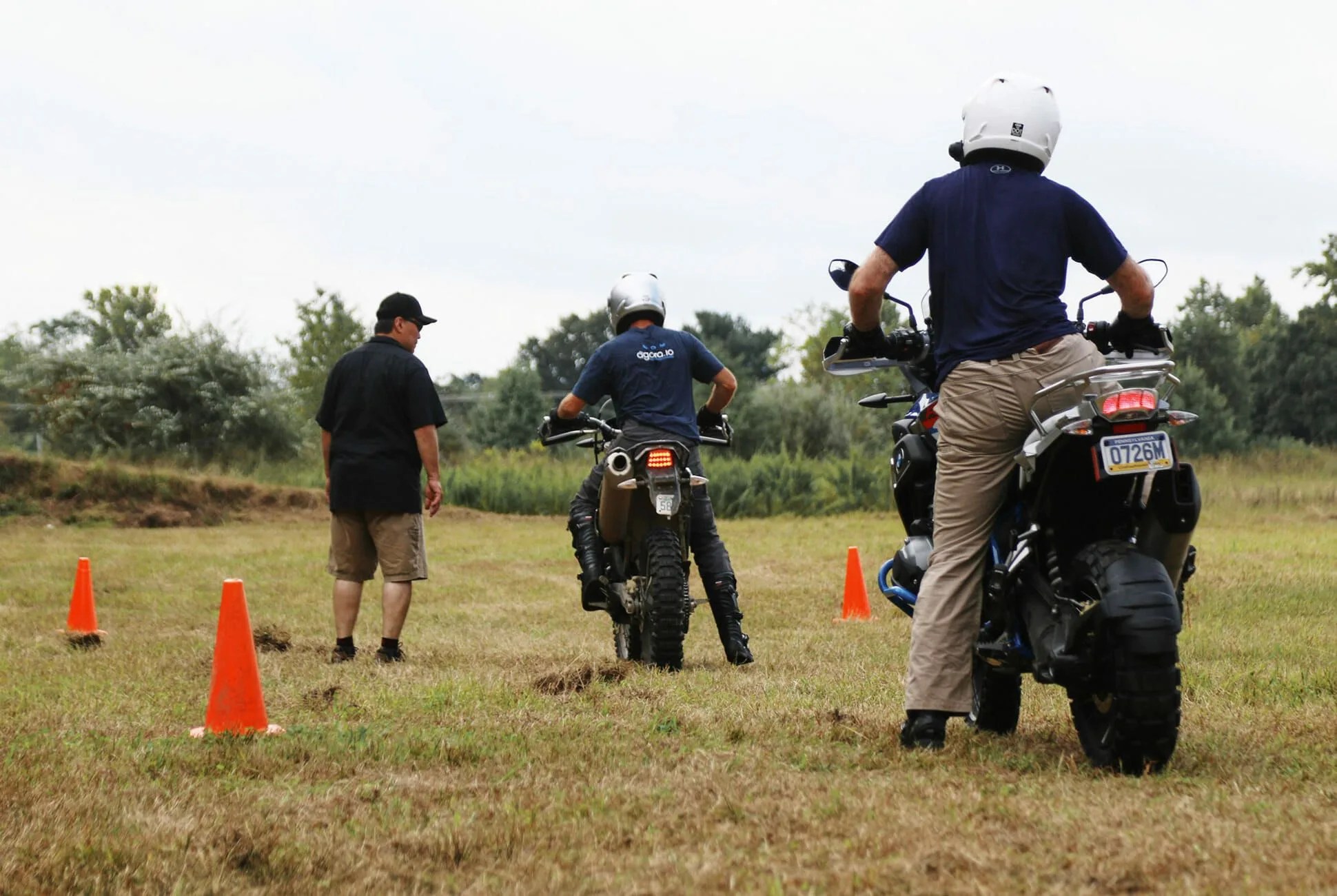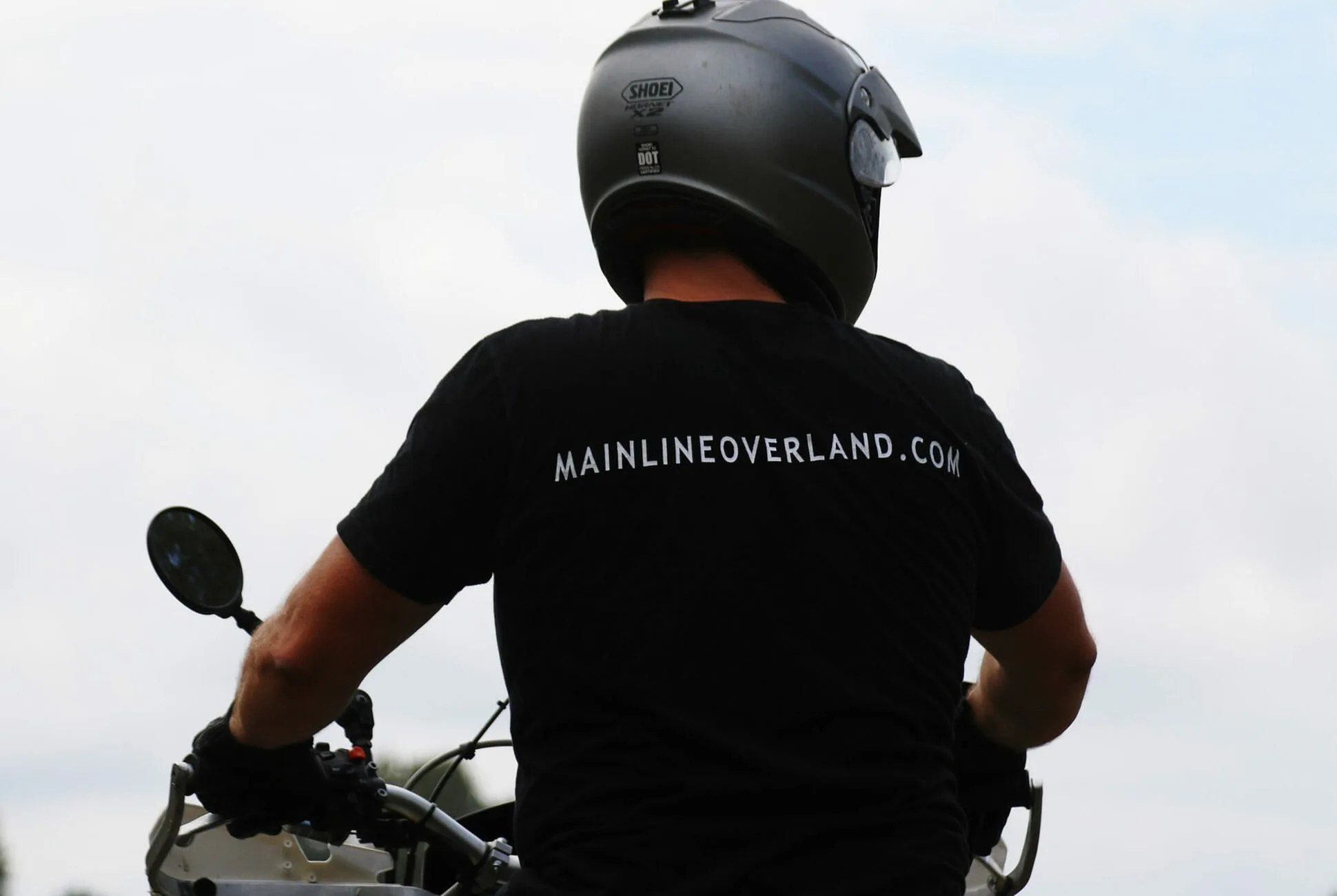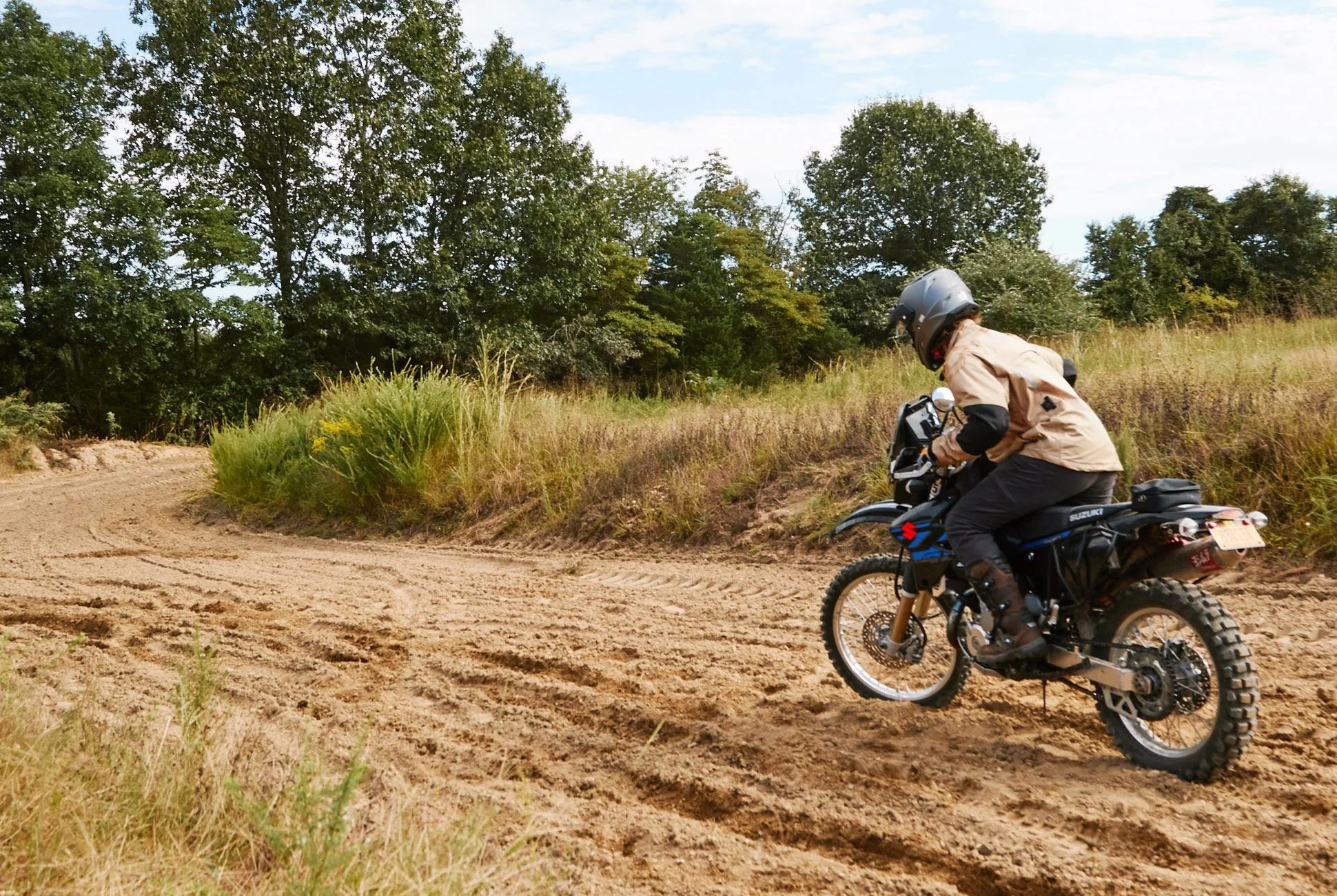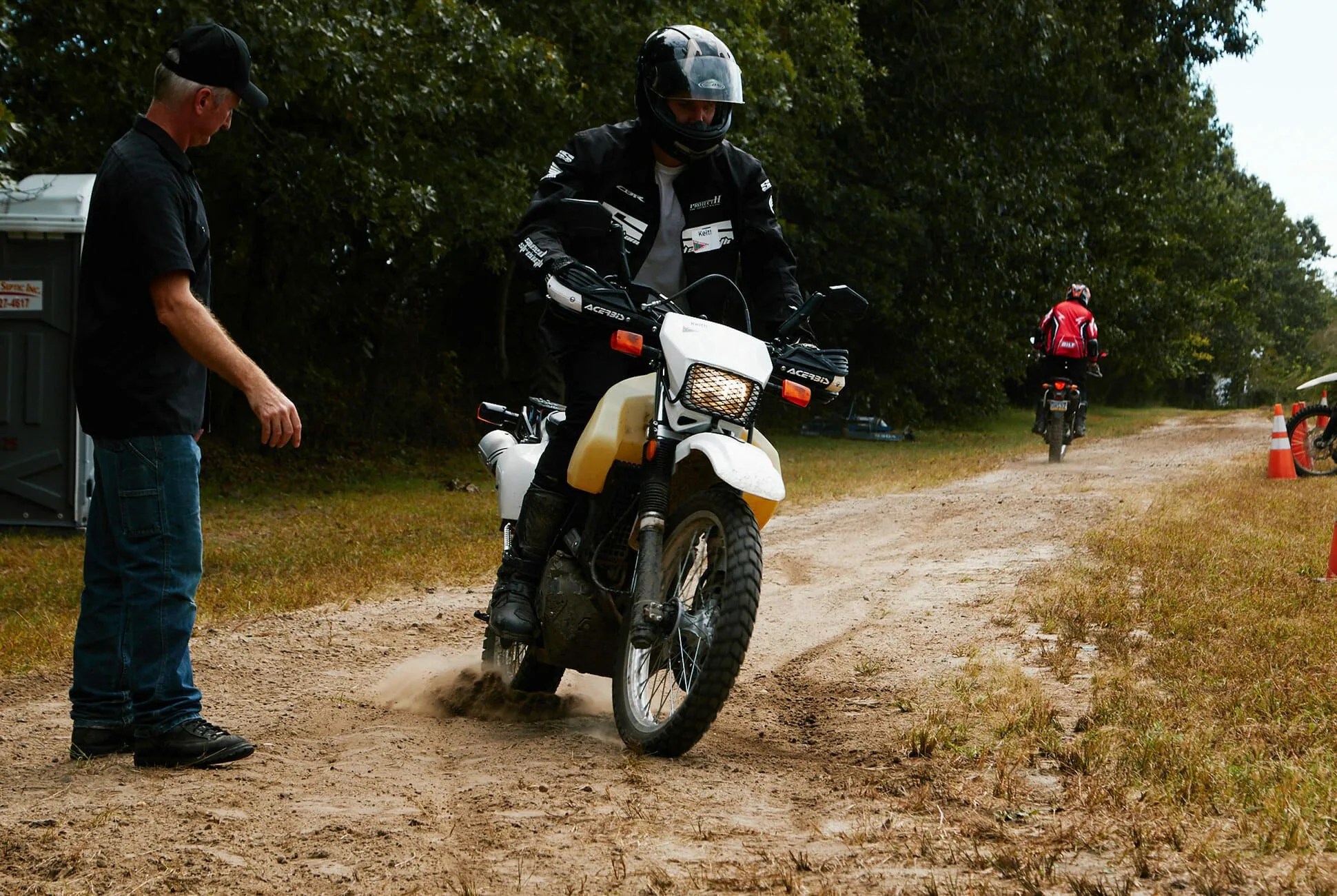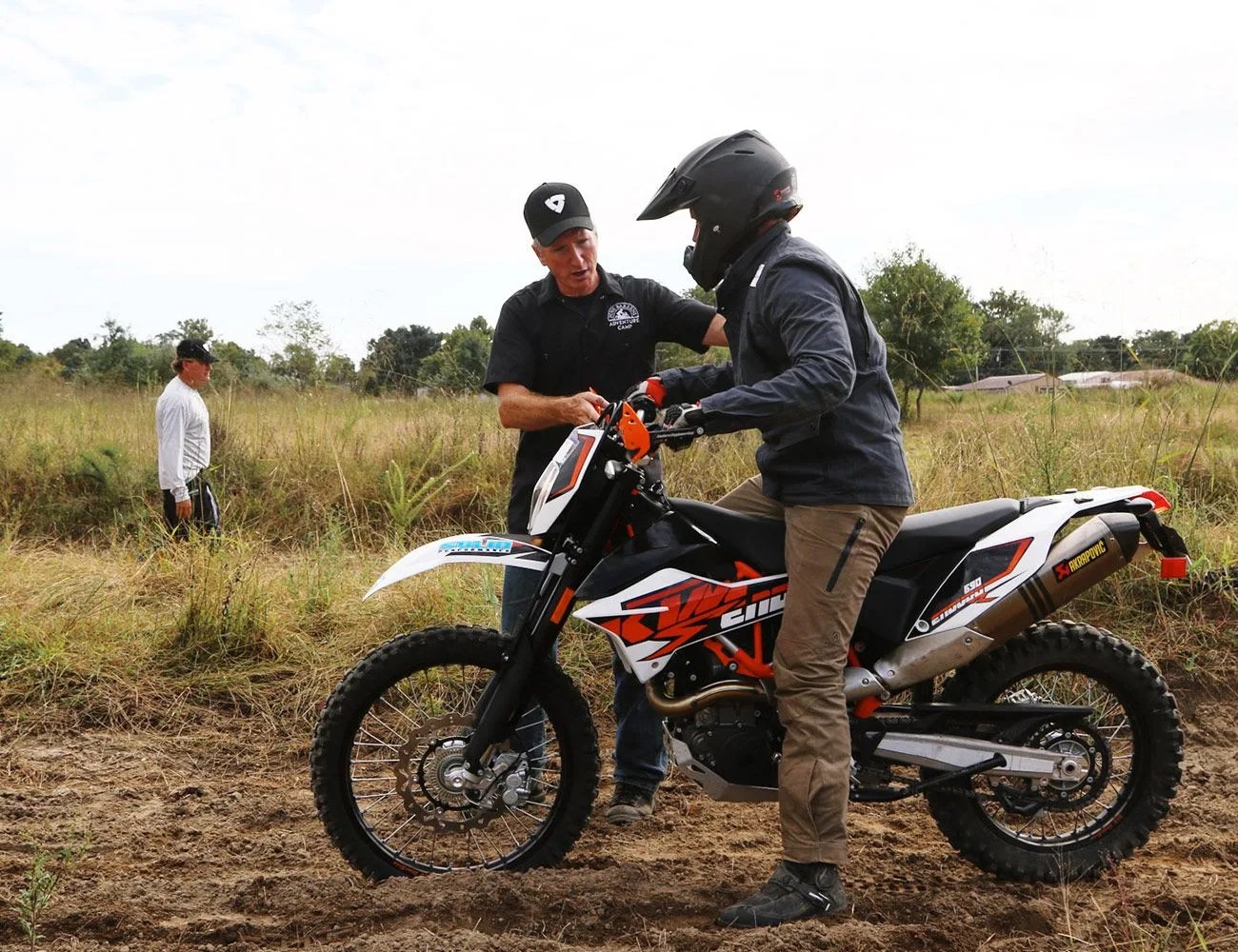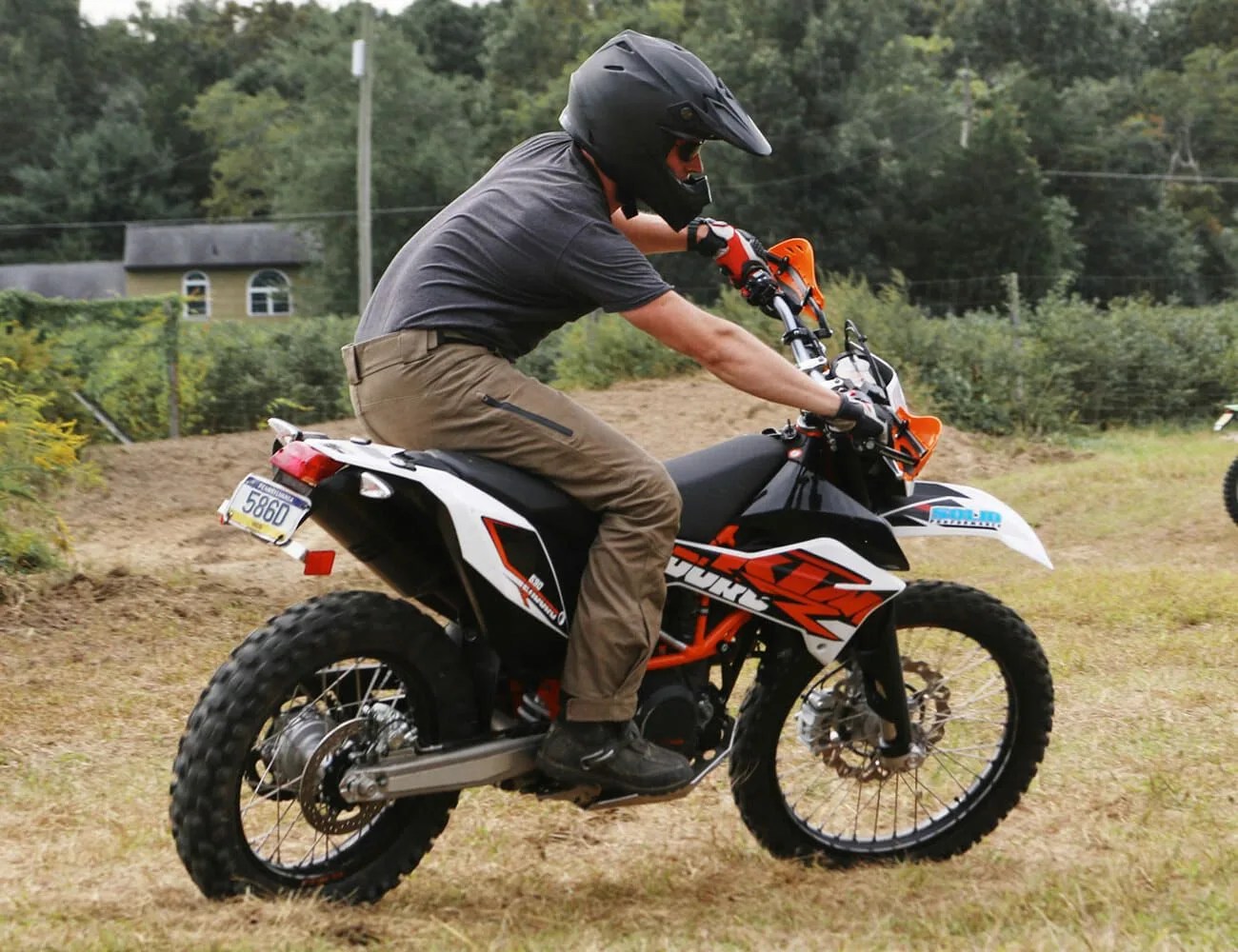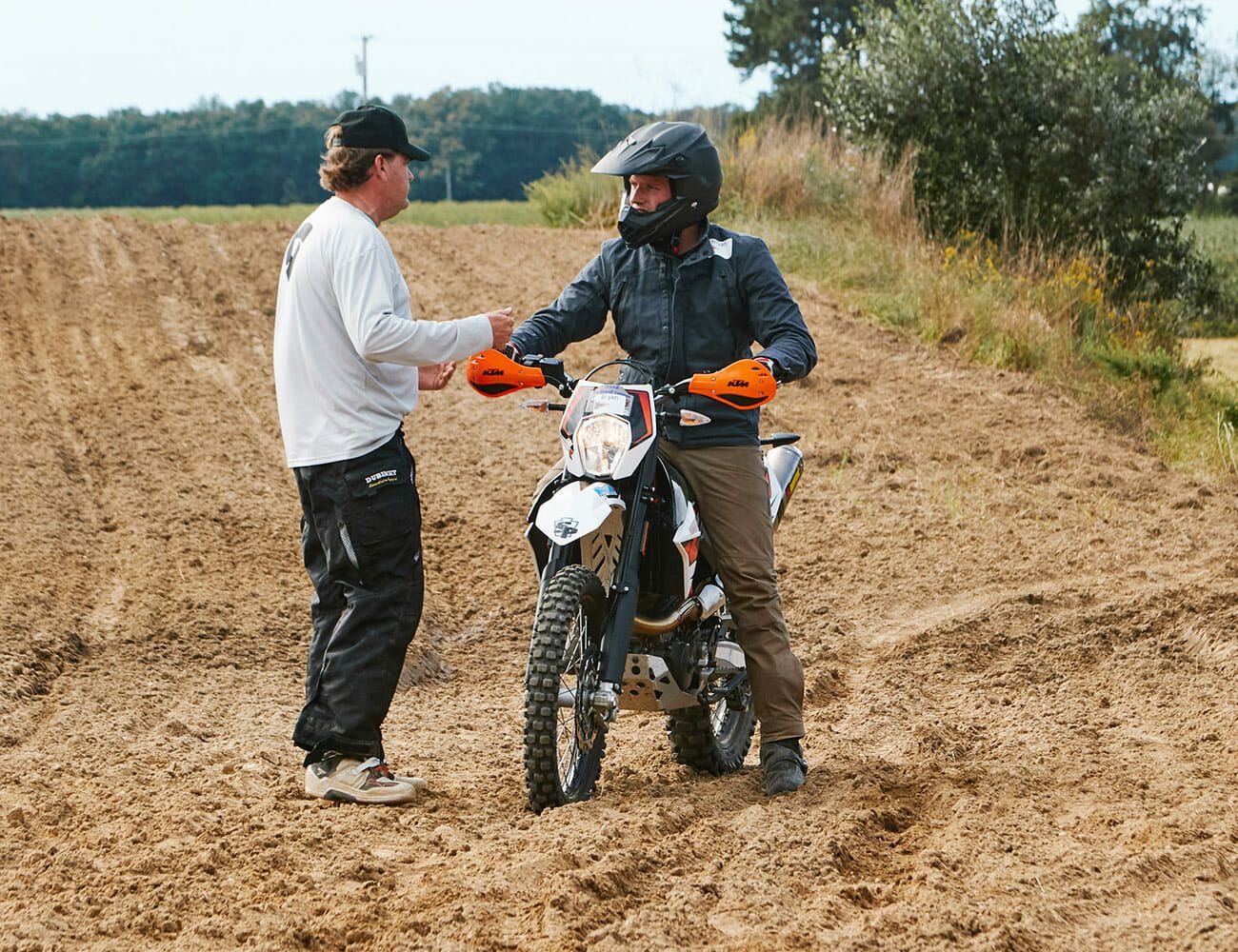8 photos
I was standing in the middle of a field, in Hammonton, New Jersey, slowly being eaten alive by mosquitoes. An overcast sky intermittently splashed down light rain and “light on the bars, feel it in your feet, light on the bars, feel it in your feet,” calmly repeated in my head between riding exercises. I found myself there, on the edge of Wharton State Forest, by way of an invite from Pine Barrens Adventure Camp Director Jack O’Connor. My goal was to prepare for the upcoming Pine Barrens 500 — a three-day, 500-mile off-road adventure motorcycle ride through New Jersey’s 1.1 million acres of dense forest, deep sand and fire roads filled with blind turns and bike hungry mud pits. The ‘bars and feet’ mantra is PBAC instructor Mike Bradway’s — a 2007 East Coast Enduro Champion, 2000 to 2007 East Coast Enduro Association Top AA rider and veteran of the 400 mile-plus dual sport ride from LA to Barstow to Vegas. So I’m all ears.
Riding off-road isn’t foreign to me at all but, I’ll admit, I still have volumes left to learn. And, since I’ve recently fallen in love with the freedom that is off-road riding, the idea of attending an adventure riding school was high on my list of things to do. Getting out on the trails, cracking the throttle wide open and barreling down fire roads to the tune of a straight-piped single cylinder sounded like a fantastic way to spend a weekend. Bradway’s first exercise? We didn’t even turn on the bikes.
Kickstands up, both feet on the pegs and standing up, we worked on balance in the adventure riding position, seeing how long we could keep the bike up without planting a foot on the ground to catch a fall. My classmates’ bikes ranged from slim Suzuki DRZs and modified Honda XR 650s to a couple of big ol’ BMW R 1200 GSs. Despite having an incredibly light Solid Performance-tuned KTM 690 Enduro tuned by to play with, almost immediately it was obvious my balanced skills sucked — and I hadn’t even clicked the bike into first gear yet. But building up a foundation of simple skills on the bike at a slow pace is crucial because if you rush it and jump up to speed too fast, you’ll fall apart. And when you have trees as thick as streetlight posts grazing inches from your handlebars and varied-traction earth under your tires, you’ll wish you took your time when you had the chance.
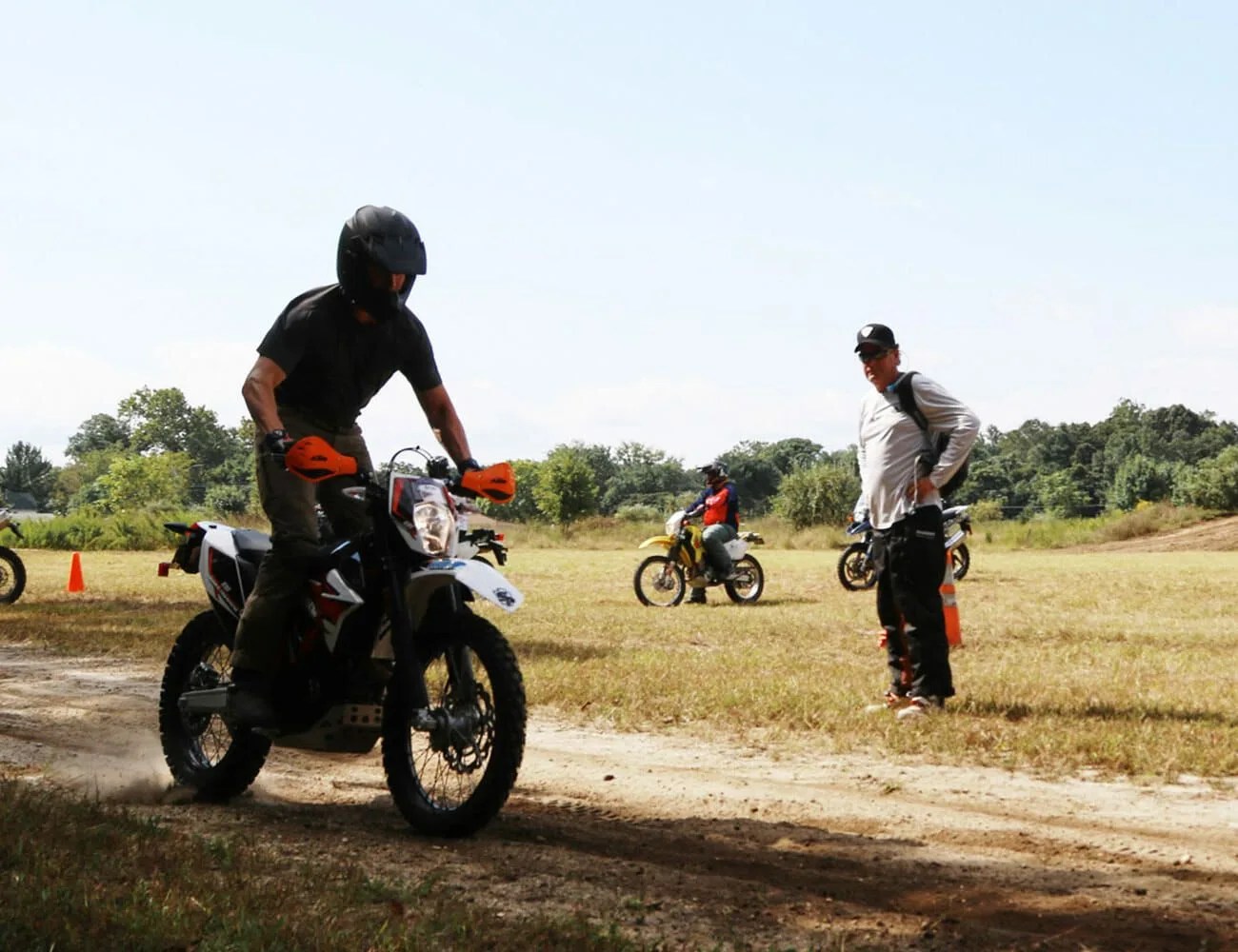
The second exercise takes the first and puts it in motion. We fire up our bikes but hardly go near the throttle at all. It’s all about keeping balance and riding “slower than first gear,” as O’Connor put it — feathering the clutch, letting the bike tractor along in a straight line as slow as possible. Not only do you get better acquainted with the action point of the clutch on your own bike, but you learn the motions, or ‘body English’, to keep your bike upright while you inch along.
The next exercise throws a six- or seven foot-long two-by-four into the mix. Aiming to get both wheels on the piece of wood by riding at it longways and then keeping the rear wheel on as long as possible, we were forcing ourselves to learn more skills while putting the previous lesson to work in a new application. Up until the afternoon ride, the rest of the day’s lessons followed the same pattern. From learning what the rear brake feels like when it locks up and when the front does the same to braking and sliding the rear tire into a turn, it was all repetition and basic skill building. That might sound tedious; in practice, it was eye-opening. Not just to how much rudimentary knowledge and motions are put to use on a constant basis while riding, but how much I desperately need the practice.
